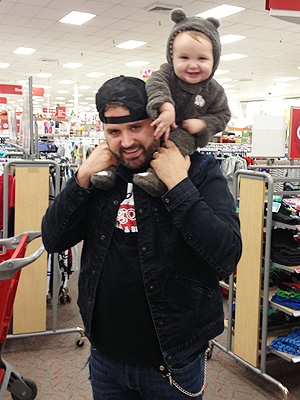The good news for RIM (RIMM): Lots of people are interested in checking out its upcoming BlackBerry 10 platform. The bad news: Few are willing to commit to buying a BlackBerry 10 device at the moment. According to a new online survey of more than 1,100 Americans commissioned by mobile application specialist BiTE interactive and conducted by reputable pollster YouGov, 47% of Americans find “at least one of BlackBerry’s new features appealing,” although only around 13% say they’ll consider buying a BlackBerry 10 device.
[More from BGR: Apple’s 128GB iPad shows the world exactly what Apple does best]
[More from BGR: Apple unveils new 128GB iPad]
The survey found that the new Time Shift Camera, which lets users rapid-shoot multiple pictures of the same subject and then choose the best one from the bunch, was the most popular new BlackBerry feature, followed by BlackBerry 10′s new predictive keyboard. But as BiTE operations executive vice president Joseph Farrell notes, there’s a big difference between interest in new features and a commitment to spend money acquiring them. Farrell also thinks that RIM will still struggle to be relevant as long as app developers neglect BlackBerry in favor of iOS and Android.
“RIM’s much anticipated BB10 launch is a major, and much needed overhaul for the one-time smartphone leader and all indications are that it has, at very least succeeded in convincing Americans to give BlackBerry a second look,” he says. “However, it is clear that while all the new features can catch the interest of Android and iOS owners, the key chink in RIM’s armor remains its apps ecosystem. RIM has made great efforts to catch up with iOS and Android in this regard, but it, like Microsoft, is likely to find this far easier said than done.”
BiTE’s full press release is posted below.
BlackBerry 10 Captures Attention of One in Two Americans
But only one in eight will actually consider buying a BB10 device
Los Angeles, January 29, 2013 – Ahead of the launch of Research in Motion’s long-anticipated BlackBerry 10 operating system and two new smartphones this week, nearly one in two Americans online (47 percent) finds at least one of BlackBerry’s new features appealing.
Despite interest in the new features only one in eight Americans (13 percent) will consider buying a BB10 device, and only one in 100 plans to get one immediately. The findings are according to a report from BiTE interactive, the native mobile application specialist for Fortune 1000 brands, which commissioned YouGov to poll the views of a representative sample of 1,127 American adults online.
Time Shift Camera wins most American hearts, especially with Android owners
RIM’s Time Shift Camera is the most compelling new BB10 feature for 16 percent of Americans. The Time Shift Camera takes multiple shots of a subject in a single picture and lets you choose the best composite image. 46 percent more women than men identify it as the most attractive new feature of BB10, while it is most appealing for one in five (21 percent) 18-34 year olds. The same age group is also the most likely to find one of the BlackBerry 10’s features appealing (66 percent). RIM’s new predictive keyboard feature is the most compelling new feature for only six percent of Americans while only one in 100 picked the new ‘flow’ interface.
The new BB10 features appeal to more Android (65 percent) than iPhone owners (56 percent).
“RIM’s much anticipated BB10 launch is a major, and much needed overhaul for the one-time smartphone leader and all indications are that it has, at very least succeeded in convincing Americans to give BlackBerry a second look,” said Joseph Farrell, EVP Operations, BiTE interactive. “However, it is clear that while all the new features can catch the interest of Android and iOS owners, the key chink in RIM’s armor remains its apps ecosystem. RIM has made great efforts to catch up with iOS and Android in this regard, but it, like Microsoft, is likely to find this far easier said than done. A lot of eyes will be on the new BlackBerry World from day one, as its success is pivotal to that of the BB10 devices as viable mainstream consumer handsets.”
iPhone owners least likely to jump to BlackBerry
According to BiTE interactive’s report, iPhone owners are the least likely to buy into BB10. Only around one in 10 (11 percent) have any interest in owning one of RIM’s new phones compared with around one in five (21 percent) Android owners. Overall, almost one in two (44 percent) Americans definitely will not get a BB10 device while a further one in four (27 percent) say they will likely not get one.
Joseph Farrell added, “RIM’s challenge is compounded by the fact that Google and Apple have already built up huge mobile user bases who, for the most part, have invested lots of time and money learning and using their platform of choice. To switch to any new platform, even between the two, means a new investment of time and resources that many do not wish to spend, let alone taking a perceived risk on the new BB10 platform, no matter how impressive some of the new technology is.”
Research methodology
BiTE interactive commissioned YouGov to poll the views of a representative sample of 1,127 US adults. Fieldwork was undertaken between January 23-25, 2013. The survey was carried out online. The figures have been weighted and are representative of all US adults (aged 18+).
This article was originally published on BGR.com
Gadgets News Headlines – Yahoo! News










